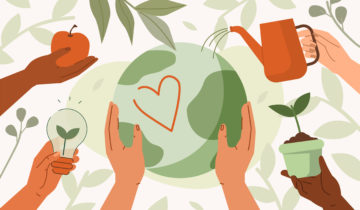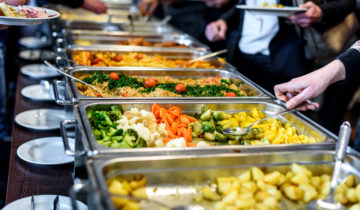The snacking market is growing rapidly in Europe, driven by changing consumer habits. This type of meal is generally taken away, sometimes without the need for cutlery or even a seat. Gone are the connotations of snacking: snacking now embodies a real food trend, combining speed and convenience with increasingly high expectations of quality.
More and more players on the snacking market
The snacking and take-away sector is doing well in France: it has tripled in ten years to represent €19 billion in 2018, although it has stagnated at €18.5 billion between 2019 and 2021 due to the health crisis. 57% of French people visit a snacking-type place at least once a week (including weekends), while only 20% do so for dinner.
Snacking is part of the activity of many players: fast food restaurants, bakeries, takeaway restaurants, supermarkets, local grocery storeś, delivery platforms… During the peaks of the Covid-19 pandemic, the total closure of traditional out-of-home catering places caused a logical increase in Click&Collect and takeaway or delivered meals. This forced change in habits has left its mark even after the situation has returned to normal, both for consumers and for professionals: takeaway meals are offered by 76% of French table-service restaurants in 2021, compared with 36% before the pandemic.
What is consumed in snacking?
In the “takeaway” category, the sandwich remains the undisputed snack with more than 2.6 billion units sold in France in 2021 (+0.2% vs. 2018). Pizzas, pastas and burgers are also among the most consumed snacks. However, the appeal of healthy products (e.g. salads) or products with added value (organic, ecological, local, etc.) is becoming increasingly important to consumers.
We should also not forget the growing number of exotic dishes that are suitable for this type of consumption. Nems, bo buns or poke bowls are eaten quickly, at the table or on delivery, and are out of the ordinary. While the “lunchbox” – bringing one’s meal to work – is making a strong comeback (45% of 18-49 year olds, +26% vs. 2010), due to fears about purchasing power and the return of “homemade” following the Covid period, originality and quality are increasingly sought after, even if it means increasing the price of the basket (58% are prepared to pay more for better quality).
Snacking trends
Snacking mobilises a large quantity of packaging and utensils intended for single use: bags, containers, cutlery, bags for condiments, etc. Facilitating both transport and consumption, they are increasingly criticised for their ecological cost. While on-site consumption will be obliged to ban all single-use items by 1 January 2023, snacking products delivered or taken away are increasingly turning to alternatives to plastic, in favour of biodegradable or easily recyclable materials such as cardboard and cellulose. Reusable or deposit packaging is also on the increase.
Other trends were quantified at the 2022 Sandwich & Snack Show:
- delivery increased by 85% between 2019 and 2021, an effect of the health crisis that has not subsided with +35% in Q1 2022;
- 8% of French people enjoy a delivered lunch at least once a week in 2022;
- healthy products (preservative-free, nitrite-free, ecological, natural, etc.) are recording 35% growth.
Snacking has been a growing market for years, driven by changing consumer habits. Although the health crisis brought takeaway sales and delivery to the forefront, the trend has been confirmed since the situation returned to normal. For an overview of the sector and key figures, discover the Snacking Barometer.







